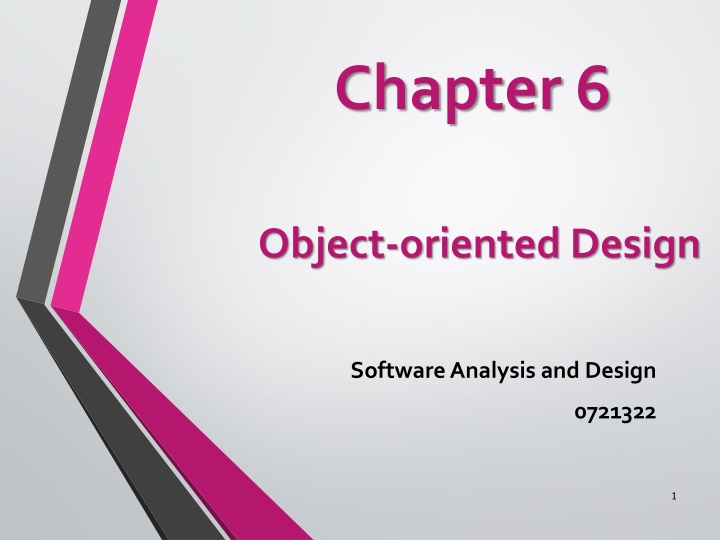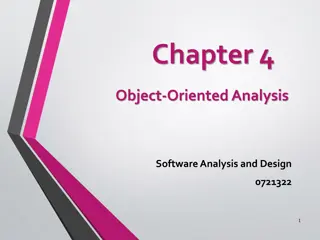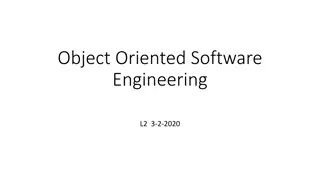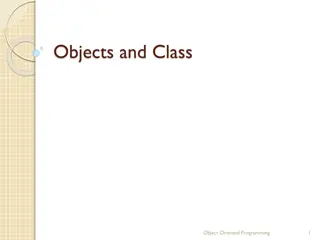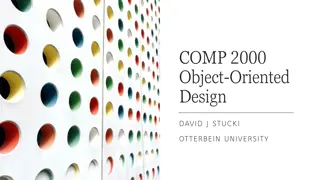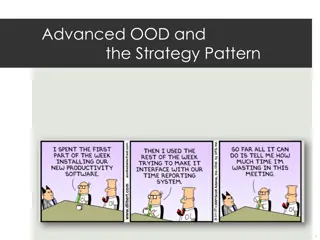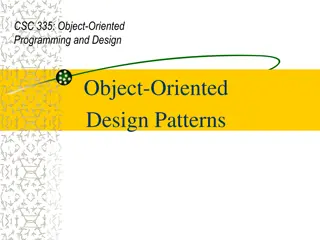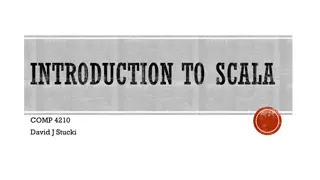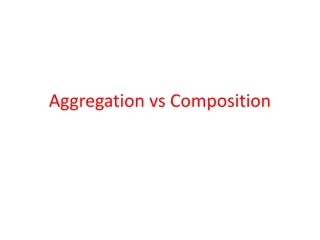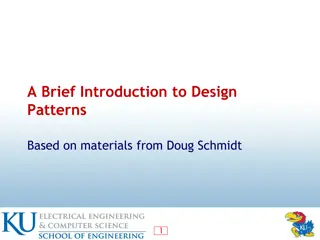Object-Oriented Design & Software Analysis
The chapter delves into the distinction between analysis and design in software development. Analysis involves understanding current system operations and new system requirements, while design focuses on producing solutions that meet these requirements. The process entails iterative activities to evolve the system and make critical decisions impacting the overall architecture. Detailed design translates analysis models into specifications for programmers, adding classes, associations, and data storage elements.
Uploaded on Feb 23, 2025 | 0 Views
Download Presentation

Please find below an Image/Link to download the presentation.
The content on the website is provided AS IS for your information and personal use only. It may not be sold, licensed, or shared on other websites without obtaining consent from the author.If you encounter any issues during the download, it is possible that the publisher has removed the file from their server.
You are allowed to download the files provided on this website for personal or commercial use, subject to the condition that they are used lawfully. All files are the property of their respective owners.
The content on the website is provided AS IS for your information and personal use only. It may not be sold, licensed, or shared on other websites without obtaining consent from the author.
E N D
Presentation Transcript
Chapter 6 Object-oriented Design Software Analysis and Design 0721322 1
Analysis vs Design The analysis activity is characterized as asking what happens in the current system and what is required in the new system. It is a process of seeking to understand the organization, investigating its requirements and modeling them. The result of this analysis activity is a specification of what the proposed system will do based on the requirements. Design is about producing a solution that meets the requirements that have been analyzed. The design activity is concerned with specifying how the new system will meet the requirements. 2
Analysis vs Design There may be many possible design solutions, but the intention is to produce the best possible solution in the circumstances. Design can be seen either as a stage in the systems development lifecycle or as an activity that takes place within the development of a system. In projects that follow the waterfall lifecycle model, the Analysis stage will be completed before the Design stage begins. However, in projects that follow an iterative lifecycle, design is not such a clear-cut stage, but is rather an activity that will be carried out on the evolving model of the system. 3
Analysis vs Design Example from Agate case study: Analysis identifies the fact that each Campaign has a tittle attribute, and this fact is documented in the class model. Design determines how this will be entered into the system, displayed on screen and stored in some kind of database together with all the other attributes of Campaign and other classes. 4
System Design vs Detailed Design During system design the designer make decisions that will affect the system as a whole. The most important aspect of this is the overall architecture of the system. System design includes choosing technologies and frameworks, and setting standards. For example: If a system uses client-server architecture, how processes and objects will be distributed on different machines? What subsystems will be allocated to different processers ? Existing standards such as screen layouts , construction guidelines, database design 5
System Design vs Detailed Design Detailed design is simply about designing inputs, outputs, processes and file or database structure. Detailed design in OO systems, includes designing user interfaces, interactions, classes and data storage. Design activity is concerned with turning an analysis model into a specification of a system that can be given to programmers to build. Design adds details to analysis model , attributes type and visibility , operations visibility and signature New classes might be added, new associations might emerge. Design will add classes that supports input and output and that allows data to be stored in a database 6
What to add to OO detailed design? Attributes data types Derived attributes Primary operations Operation signature Visibility 7
Attributes data types Attributes have to be specified in terms of data types and sometimes initial values. Common data types: Boolean Character Integer Floating-point data types (float, double, decimal) String Some OO programming languages provide complex data types like currency (money) , date , etc. 8
Attributes data types Examples: campaignBudget : Money = 0.00 customerName : String {not null} contact : String[0..5] 9
Derived attributes The values of some attributes can be derived from other attributes in the same class or other class. They will have an operation to get the value, but to set it. It is necessary to decide how these values will be calculated. There are two choices: o Calculate their values when they are needed o Calculate their values whenever one of the values they depend on changes. 10
Derived attributes In BankAccount class availableBalance is a derived attribute. Indicate in UML by adding / before the name of the attribute. availableBalance is the sum of balance and overdarftLimit Can be calculated in two ways. What are they? 12
Primary operations In analysis we identify operations that are necessary to support use cases. Since we design our classes for reuse; we add other operations. Primary operations include: Constructor Destructor Get and Set operations or properties 13
Operation signatures Operations have to be specified in terms of parameters (in and out) and their visibility. Example: withdraw( amount: Money) : Boolean calcCampaignBudget( ) : Money Exceptions are not shown as a part if the operation syntax in UML class diagram, but can be held in the model. 14
Visibility + : Public - : Private # : Protected ~: Package 15
Grouping attributes and operations in classes 16
Assigning responsibilities A responsibility can be assigned to more than one class. Take reuse into consideration when assigning responsibilities. 17
Coupling and cohesion Coupling describes the degree of interconnections between design components and is reflected by the number of links an object has with other objects. o Interaction coupling is a measure of the number of different messages an object sends to other objects and number of passed parameters with these messages. o Inheritance coupling describes the degree to which a subclass actually needs the features in inherits from it s abase class. 18
Coupling and cohesion Cohesion is a measure of the degree to which an elements contributes to a single purpose. oOperation cohesion measures the degree to which an operation focuses on a single functional requirement. o Class Cohesion measures the degree to which a class focuses on a single requirement. 20
Room Width length .. 21
A Some design principles Liskov substitution principle: o applies to inheritance hierarchies. o states that is should be possible to treat a derived object as if it were a base object. Open-close principle: o states that a module (or a class) should be open for extension but closed for modification. B 22
Designing associations One to One associations : converting associations ends to an attribute Private registration Private string name ; 24
Designing associations One to Many associations : using a collection class - camAdvert : Advert[ ] 25
